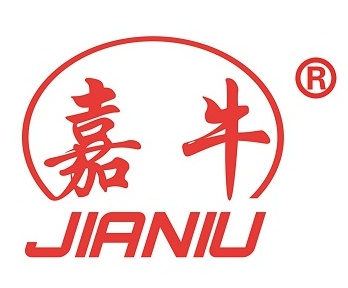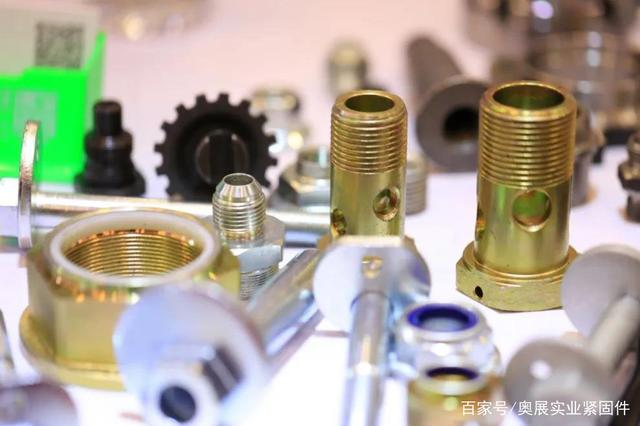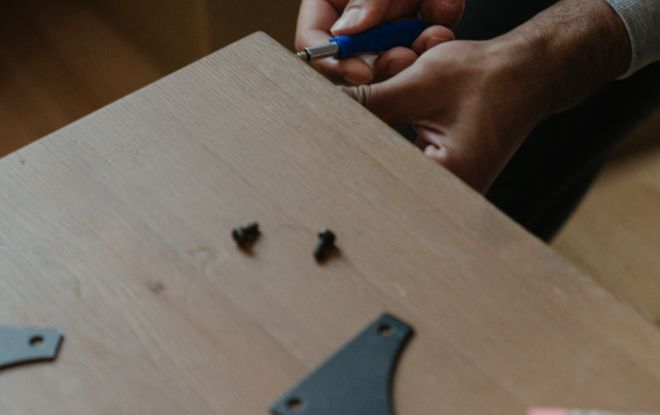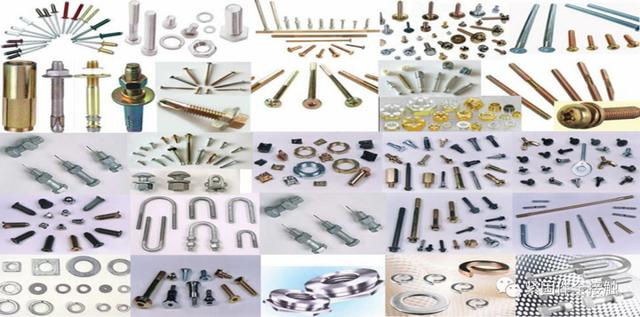Ultra high strength fasteners can reduce weight and increase installation space by reducing their own size under the same clamping force. Therefore, they can optimize the function and volume of connected parts, so that the equipment can achieve the goal of overall weight reduction and performance optimization.
So what is high strength bolt? What is the strength of high strength bolts? Xiaobian will take you to know today.
On November 28, 2021, seven units, including the high-performance steel materials team led by Professor Dong Han of the school of materials science and engineering of Shanghai University, Hebei Longfengshan Casting Industry Co., Ltd., Qifeng Precision Technology Co., Ltd., Zhoushan 7412 factory, Jiangsu metallurgical technology research institute, Shanghai University (Zhejiang) high end equipment Basic Materials Research Institute, and Shanghai University new materials (Taizhou) Research Institute, completed joint research for more than a year, Through the cooperation of the whole industry chain of "material production fastener manufacturing service evaluation", based on the high-performance theory of steel materials, b17.8 and b19.8 steels for ultra-high strength fasteners have been successfully developed using the high-purity iron raw materials produced by Longfengshan casting industry, forming 16.8 and 19.8 fastener manufacturing technologies.

16.8 and 19.8 fasteners
one
What is high strength bolt?
High strength friction grip bolt (hsfg) is translated as high strength friction preload bolt in English. It can be seen that the high-strength bolt in Chinese construction is the abbreviation of the high-strength friction pre tightened bolt. In daily communication, the words "friction" and "grip" are only briefly used, but many engineers and technicians have misunderstood the basic definition of high-strength bolts.
Myth 1:
Are bolts with material grade exceeding 8.8 "high strength bolts"?
The core difference between high-strength bolts and ordinary bolts is not the strength of the materials used, but the form of stress. The essence is whether to apply preload and use static friction to resist shear.
In fact, there are only 8.8 and 10.9 high strength bolts (hsfg bolt) mentioned in British standard specifications and American Standard Specifications (BS EN 14399 / astm-a325). It can be seen that the strength of materials is not the key to distinguish high strength bolts from ordinary bolts.

two
What is the strength of high strength bolts?
According to GB50017, calculate the tensile and shear strength of single ordinary bolt (class B) grade 8.8 and high-strength bolt grade 8.8.
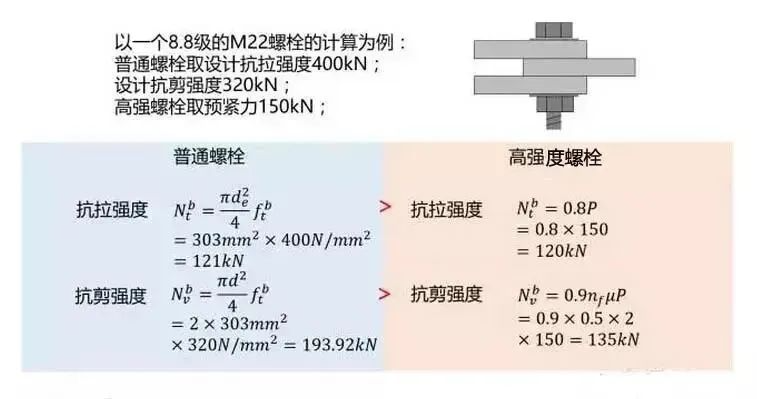
Through calculation, we can see that under the same grade, the design values of tensile strength and shear strength of ordinary bolts are higher than those of high-strength bolts.
So where is the "strength" of high-strength bolts?
In order to answer this question, it is necessary to start with the design working state of the two bolts, study the laws of their elastic-plastic deformation, and understand the limit state at the time of design failure.
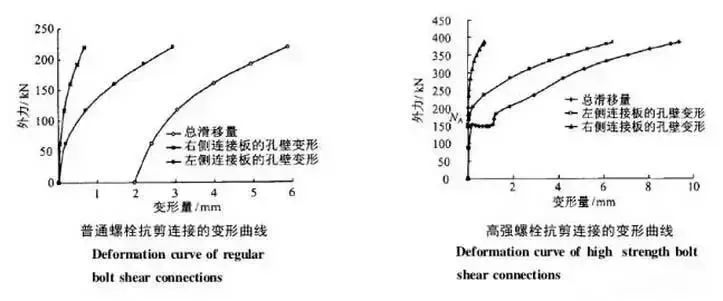
Stress strain curves of ordinary bolts and high strength bolts under working conditions
Limit state at design failure
Ordinary bolt: plastic deformation of the screw exceeds the allowable design value and the screw is sheared.
For ordinary bolted connection, relative sliding will occur between the connecting plates before they start to bear shear force, and then the bolt rod and the connecting plate will contact and undergo elastic-plastic deformation to bear shear force.
High strength bolt: the static friction between the effective friction surfaces is overcome, and the relative displacement of the two steel plates is considered as failure in design.
In the high-strength bolt connection, the friction first bears the shear force. When the load increases to the point where the friction force is insufficient to resist the shear force, the static friction force is overcome, and the connecting plate will slide relatively (limit state). However, although it is damaged at this time, the bolt rod contacts with the connecting plate, and can still use its own elastic-plastic deformation to bear the shear force.
Myth 2:
High bearing capacity is high strength bolt?
From the calculation of a single bolt, it can be seen that the design strength of tensile and shear resistance of high-strength bolts is lower than that of ordinary bolts. The essence of its high strength is that during normal operation, the joints are not allowed to have any relative slip, that is, the elastic-plastic deformation is small and the joint stiffness is large.
It can be seen that, given the design node load, the node designed with high-strength bolts may not necessarily save the number of bolts, but it has small deformation, large stiffness and high safety reserves. High strength bolts are suitable for main beams and other locations requiring high node stiffness, which conform to the basic seismic design principle of "strong nodes, weak members".
The strength of high-strength bolts does not lie in the design value of their own bearing capacity, but in the large stiffness, high safety performance and strong resistance to damage of their design nodes.
three
Comparison between high strength bolt and ordinary bolt
Ordinary bolts and high-strength bolts have great differences in construction inspection methods due to their different design principles.
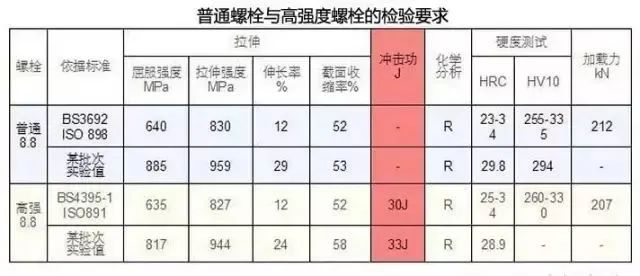
All mechanical performance requirements of ordinary bolts of the same grade are slightly higher than those of high-strength bolts, but high-strength bolts have one more acceptance requirement for impact energy than ordinary bolts.
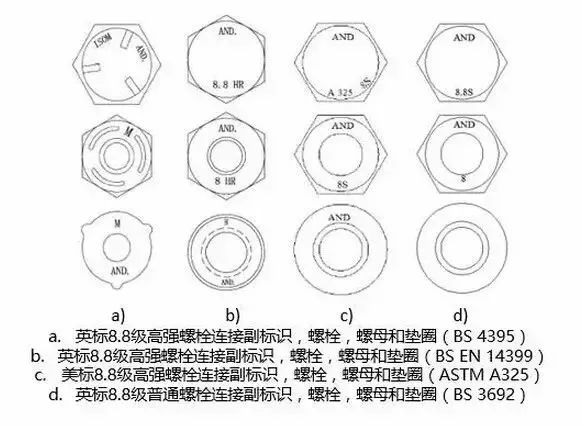
The marking of ordinary bolts and high-strength bolts is the basic method for on-site identification of bolts of the same grade. Since the values calculated for the torque values of high-strength bolts in British and American standards are not the same, it is necessary to identify the bolts of the two standards.
High strength bolt: (M24, L60, grade 8.8)
Ordinary bolt: (M24, L60, grade 8.8)
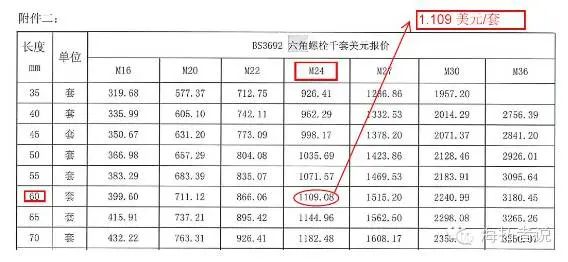
It can be seen that ordinary bolts account for about 70% of the price of high-strength bolts. Combined with the comparison of their acceptance requirements, it can be concluded that the premium part should be to ensure the impact energy (toughness) performance of materials.
four
How to improve the fatigue strength of bolts
No matter what complex load it bears, the common failure form of high-strength bolts is fatigue failure. As early as 1980, experts studied 200 cases of bolt connection failures, of which more than 50% were fatigue failures. It is very important to improve the fatigue resistance of high strength bolts.
The fatigue fracture of bolts has the following characteristics:
1. The maximum stress of fatigue fracture is far lower than the strength limit of the material under static stress, and even lower than the yield limit.
2. The fatigue fracture is brittle fracture without obvious plastic deformation.
3. Fatigue fracture is the result of micro damage accumulation to a certain extent.
For bolts, the failure modes are mainly plastic deformation of the thread part and fatigue fracture of the screw, among which:
65% of the damage occurred in the first thread connected with the nut;
20% of the damage occurred at the transition between thread and smooth rod;
15% of the damage occurred at the transition fillet between the bolt head and the screw.
01
Optimize design to reduce stress concentration
Strictly control the ending size of bolts to eliminate stress concentration:
a. Use large transition fillet
b. Cutting unloading groove

c. Cutting the undercut at the end of the thread
d. Optimizing the bolt head dip angle can also effectively reduce the stress concentration
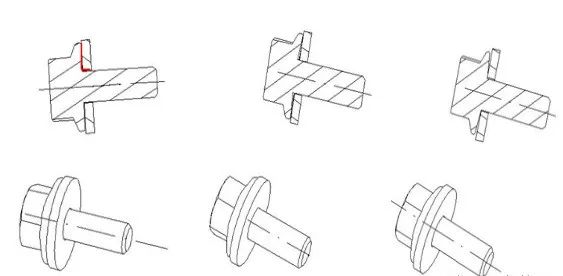
e. Use reinforced thread
The main differences between the reinforced thread and the ordinary thread are the small diameter D1 of the external thread and the root transition fillet R.
The main characteristics of reinforced thread are that the small diameter D1 is larger than that of ordinary thread, and the radius of root transition fillet is increased by R to reduce the stress concentration of the bolt, and there are specific requirements for R: R + = 0.18042p, Rmin = 0.15011p, where p is the pitch, while ordinary thread has no such requirements, and can even be a straight section.
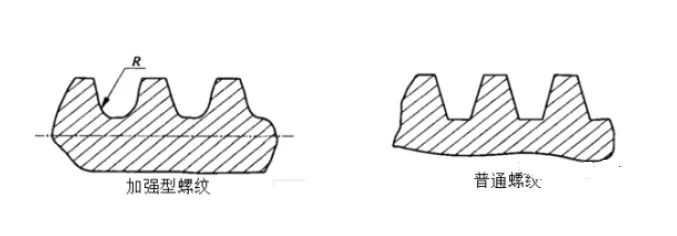
02
Improve manufacturing process
Strengthening the control of the heat treatment and surface treatment process in the manufacturing process of bolts can effectively improve the fatigue of bolts.
a. Heat treatment
The bolts are heat-treated first and then formed by wire rolling, so that a large residual compressive stress is generated inside the bolts, which slows down the formation and development of cracks and improves the fatigue strength of bolts.
Decarburization shall be prevented during heat treatment, and the fatigue strength of bolts without and with surface decarburization shall be compared.
As carbon is oxidized, the number of cementite in the metallographic structure of the decarburized layer is less than that of the normal structure, so the strength or hardness of the decarburized layer is lower than that of the normal structure in terms of mechanical properties.
The fatigue strength of bolts usually decreases by 19.8% in the presence of surface decarburization.
b. Phosphating
Phosphating treatment of bolt surface is to prevent rust and stabilize friction during assembly.
However, phosphating treatment can also play a role in reducing wear.
